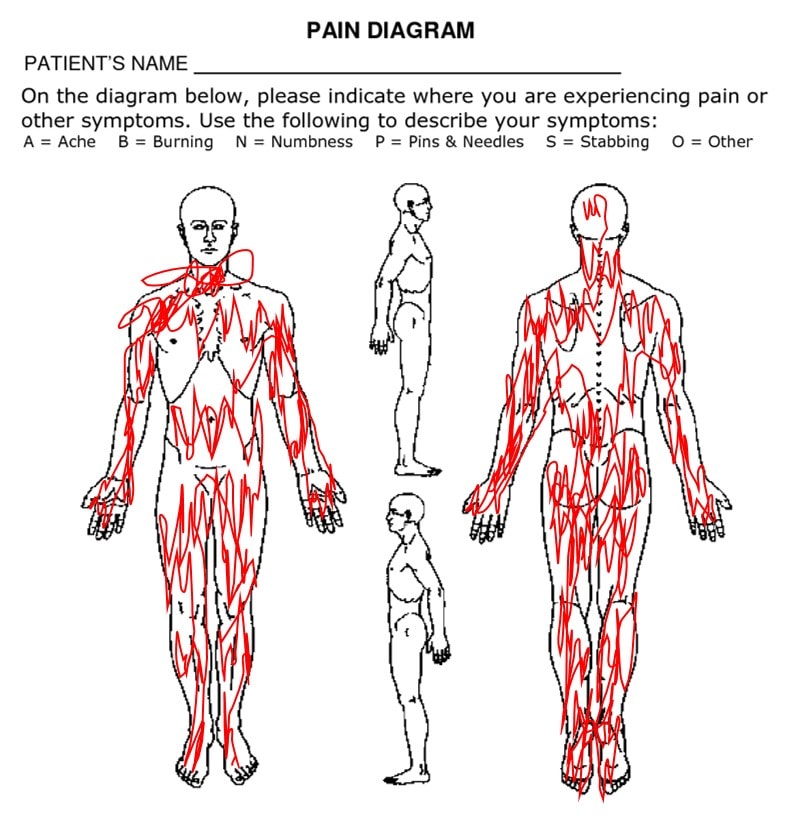Traditional vs. Regenerative Spine Care
Yesterday in the clinic I had two patients before lunch that define the differences between our traditional existing spine treatment paradigms and what our clinic defines as Regenerative Spine Care (using platelets and stem cells to treat patients with bad discs, facet joints, or ligaments). The first patient was a late thirties father who had been in a large clinic system with low back pain. This began when his small son tackled and surprised him about a year ago. He spent an agonizing 7 months in their “Pain Clinic” in acupuncture and chiropractic and in and out of physical therapy, which did no good. He then saw an interventional spine physician who decided he needed medial branch blocks. These are injections to numb the little nerves that take pain from the low back facet joints. These joints occur two at each spine level and are about the size of your finger joint. Since this numbing injection helped a bit for a few hours, he then underwent radiofrequency ablation (RFA) of those joints. RFA is when the doctor inserts a needle whose tip gets very hot and burns away the little nerves that take pain from the joint. This didn’t work well either. He still can’t sit on his left butt and his hip flexors on the left are super tight. So now that you’ve heard the traditional approach, let’s switch gears into a regenerative mindset.
When I evaluated this gentleman, I noticed that the multifidus muscles in his back were about 50% smaller on his MRI than they should be. This is a concern, as these are important stabilizers of the back. It’s also a major concern, as RFA also ablates the little nerve that supplies these muscles, so if we reimaged his back now, one month after his failed RFA, I bet those muscles are now mostly gone. Can you say, “Really unstable back?” His MRI had a good sized disc bulge at L1-L2 that the radiologist said was likely irritating the existing left upper lumbar spinal nerve. Since this nerve supplies the hip flexors, this is why they’re chronically tight. In addition, from his reading on the Internet, he figured out himself that his Sacroiliac Joint (SI Joint) was likely involved, he was correct. So our focus will be using the Regenexx-PL-Disc procedure on his L-L2 disc to try an improve the health of the irritated nerve which should reduce the hip flexor tightness. Once his medial branch nerve grows back in about a year, hopefully we can get his multifidus muscles back on-line (that’s an “if”). If we need to treat his facet joints, we’ll do that with platelet rich plasma or stem cells and not by killing off an important low back nerve. Finally, his SI joint became unstable due to damaged ligaments when his son hit him from behind, so we’ll focus on healing those stretched SI joint ligaments as well.
The second patient before lunch illustrates just how some patients can respond to a regenerative approach and the stark differences between that and a traditional surgical approach. This is a young gentleman in his mid-twenties who was in a horrible catastrophic car crash. He came in contemplating major surgery on his neck and back, as his spinal cord at C3-C4 was extremely tight in the spinal canal due to bulging discs, a small canal, and buckling ligaments. His L4-L5 area was the same. His pain diagram looked like the one above. Now why would a perfectly healthy 20 something have stenosis (a crowded opening in the neck and back bones for the spinal cord)? The leading explanation was that instability in the spine was caused when the major ligaments that stabilize C3-C4 were damaged in the car crash. This caused his smaller ligaments in the spinal canal to grow bigger to try to stabilize his spine. All of this combined with injured discs to reduce the room for the spinal cord, leading to intermittent compression of the cord and the whole body pain he was experiencing (since all signals from his body pass through this area). So I agreed to use the healing growth factors isolated from his own blood platelets to both try to heal these damaged ligaments and to improve the function of these pinched neck nerves. These growth factors were carefully placed under exacting x-ray guidance into the area around the nerves (epidural). After two treatments he returned yesterday to determine next steps. He had full neck range of motion (he had none before), no more neck or whole body pain, no more back or leg pain, and had begun hitting the gym again (whereas before he was disabled).
The differences between traditional spine care and the regenerative or Orthopedics 2.0 approach are stark. I got into the car with my office manager for a lunch meeting and told him we do some incredible things. Just a decade ago I would have been the one offering the first guy a radiofrequency procedure on his back or walking the second guy over to the surgeons office!

If you have questions or comments about this blog post, please email us at [email protected]
NOTE: This blog post provides general information to help the reader better understand regenerative medicine, musculoskeletal health, and related subjects. All content provided in this blog, website, or any linked materials, including text, graphics, images, patient profiles, outcomes, and information, are not intended and should not be considered or used as a substitute for medical advice, diagnosis, or treatment. Please always consult with a professional and certified healthcare provider to discuss if a treatment is right for you.

